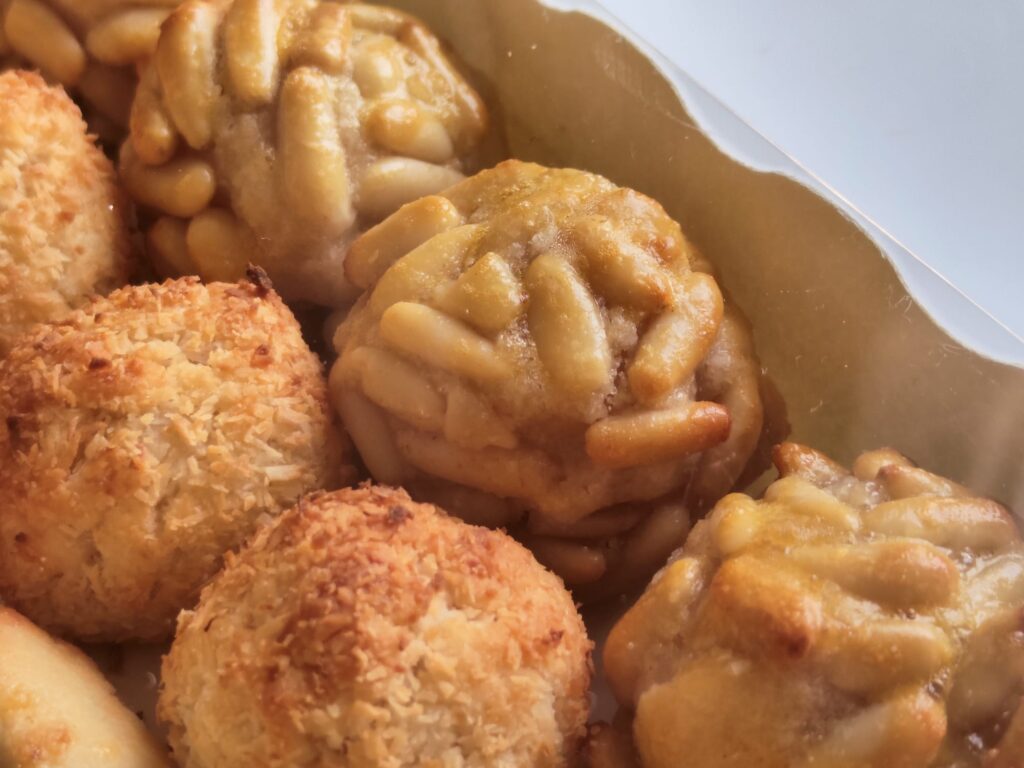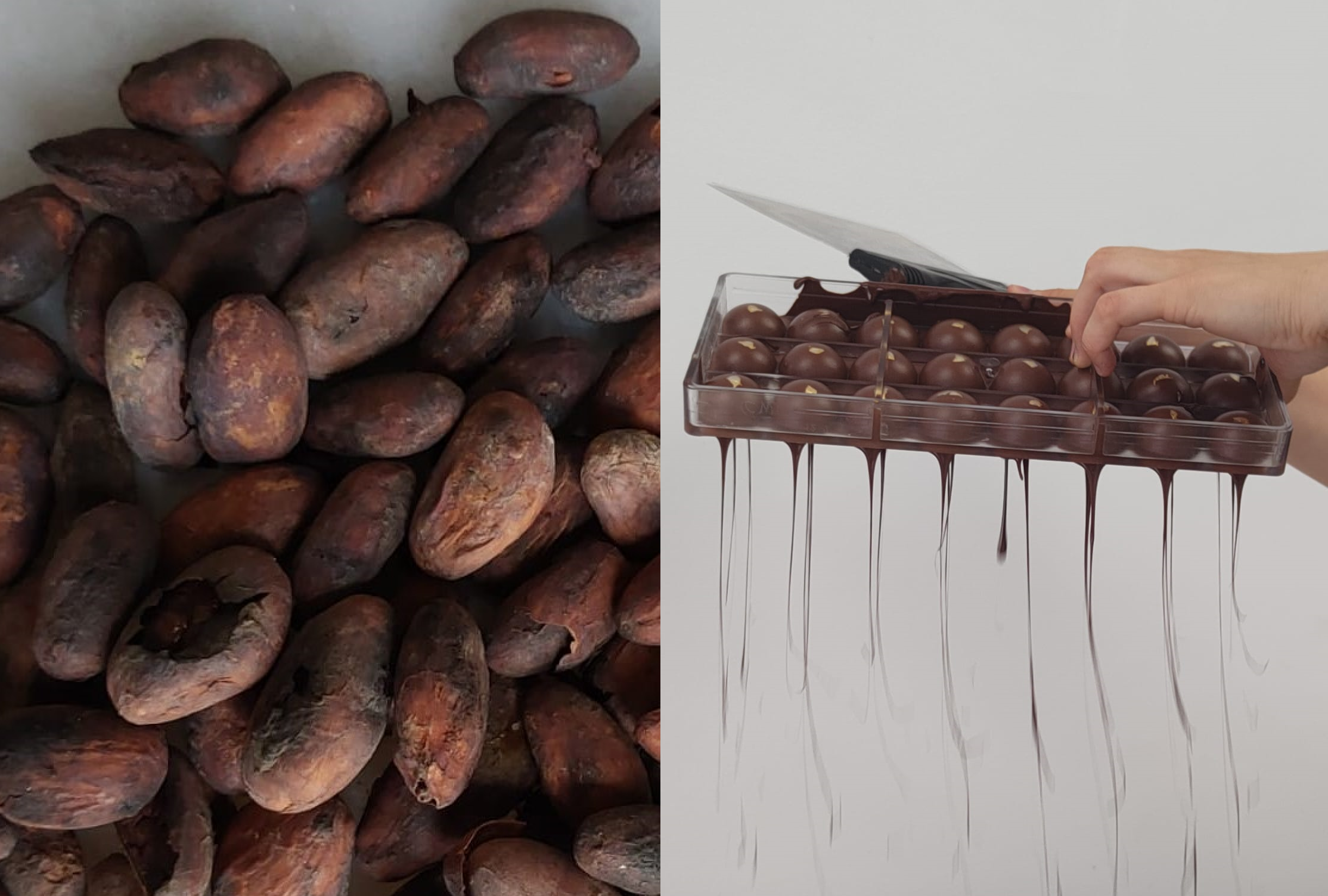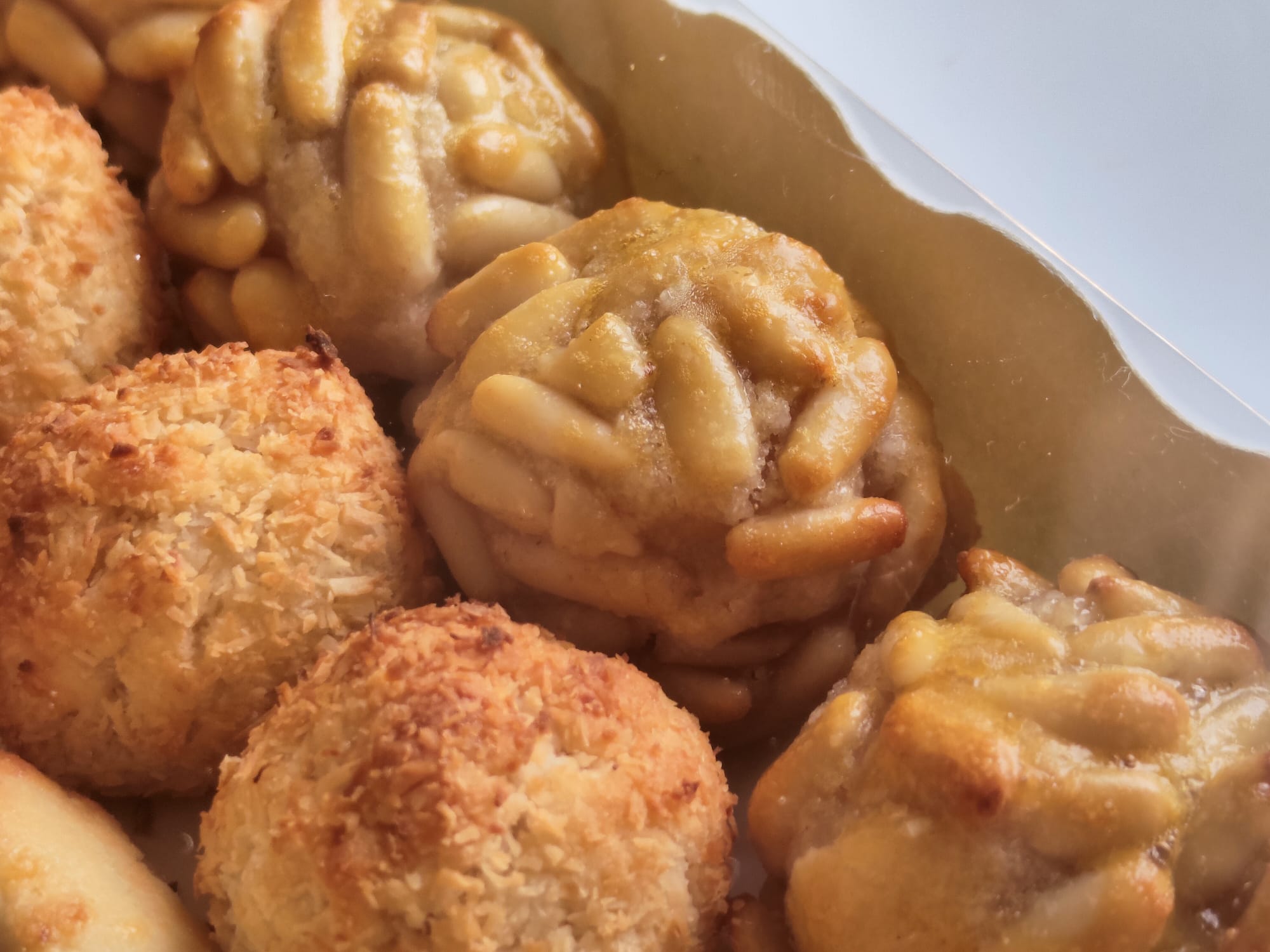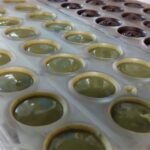In the leadup to November 1st, the windows of Catalan pastry shops start to fill up with panellet in all different tastes, shapes and sizes. An estimated 250,000 kg of panellets are sold every year for All Saints' Day. Have you ever wondered where this Catalan tradition came from?
What are panellets?
The term panellet is a type of sweet that is traditionally eaten for All Saints' Day in Catalonia.
The typical recipe is made with a marzipan base consisting of almond flour, sugar and egg. This base can be rolled in pine nuts for the most traditional round panellets, or combined with other ingredients such as chopped almonds, chestnut, coffee or coconut.
What is All Saints' Day?
The holiday of All Saints' Day honours ancestors who have passed away. Although it's considered a Christian tradition, All Saints' Day takes its roots from a Celtic holiday that was called Samhain.
For the Celts, November 1st represented the first day of the dark season, when the days got noticeably shorter, the cold set in and plants and animals died or went into hibernation. For these reasons, it was considered an appropriate day to commemorate those who have passed into the next world.
Nowadays, on November 1st Catalans celebrate a castanyada, where families come together to eat chestnuts, yams and panellets, all washed down with sweet Moscatel. This is also the day when the souls of the dead come to visit. On November 2, families go to the cemetery to make offerings of flowers and honour their ancestors.
Where did the tradition of eating panellets during the Castanyada come from?
Although historians aren't sure about how panellets originated, it's believed they may have started out as offerings for the dead, which people brought to the gravestones of their loved ones. Compared to other types of pastry, panellets are fairly long-lasting, and this quality recalls the concept of eternity. It's for this same reason that people also eat chestnuts and yams for All Saints' Day. In addition to having a long shelf life, these last two products are also seasonal for this time of year.
Some records suggest that panellets were eaten in Barcelona as early as the 13th century. In the 18th century they were sold in cafés in the old town and in fairs, or they were raffled off together with chestnuts and wine. It wasn't until much later than they began to be available for purchase in pastry shops.
How to know if you're buying good-quality artisan panellets
For a panellet to be considered authentic and traditional, it must follow certain norms established by the Federació Catalana de PastisseríaA panellet is made primarily of marzipan, which consists of almonds, sugar and either egg or sugar syrup to hold it together. Under the terms of the EU's Traditional Specialty Guaranteed denomination, it's forbidden to add preservatives, colouring, apple, potato or yam starch - although these are common additions in home baking or in lesser bakeries and supermarkets.
Once the marzipan base is made, people impart different flavours by adding inclusions such as pine nuts, chopped almonds, quince, chestnut, chocolate, coffee and coconut. Since a panellet has relatively few ingredients, the quality of these ingredients makes all the difference to the overall taste.
Panellets flavoured with pine nuts are by far and above the most popular type. The best pine nut panellets are made with Marcona almonds and Iberian pine nuts. Although Chinese pine nuts are much more economical, Iberian pine nuts have an intense and unmistakeable flavour that makes them much more desirable. It's easy to recognize the difference between the two, because Iberian pine nuts are usually longer while Chinese pine nuts are shorter and more rounded.
En Danielle Pacheco Chocolatier siempre usamos ingredientes de la mejor calidad. Los panellets están hechos con almendras marcona y piñones del país, y los elaboramos de forma continua para asegurar que estén frescos para tus celebraciones. Descubre los sabores de panellets que ofrecemos >






